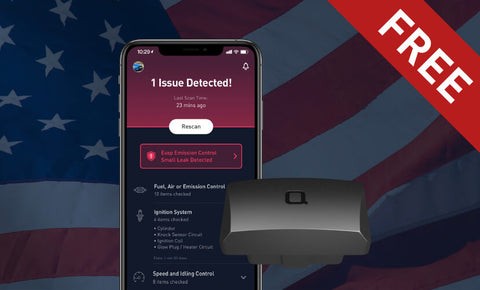Understanding how long it takes for your OBD2 system to reset is crucial for both mechanics and car owners. This process, known as a drive cycle, allows your vehicle’s computer (PCM) to re-evaluate emissions systems and diagnostic trouble codes (DTCs) after repairs or clearing codes. This guide will walk you through the process and answer the question: How Long Does It Take Obd2 To Reset?
What is an OBD2 Drive Cycle?
A drive cycle is a series of specific driving conditions that allow your vehicle’s onboard diagnostic system (OBD2) to complete self-tests and monitor emissions-related components. Completing a drive cycle is necessary for the PCM to determine if repairs have been successful and to update the status of DTCs or the check engine light. Essentially, it’s a standardized way to get your car’s computer to re-evaluate its systems.
How to Perform an OBD2 Drive Cycle
While specific drive cycles can vary slightly between car manufacturers, here’s a general outline of the steps involved:
-
Clear Existing Codes: Use an OBD2 scanner to clear any existing DTCs. This is a crucial first step, as the drive cycle won’t start until old codes are erased.
-
Fuel Level Check: Ensure your fuel tank is between 30% and 70% full.
-
Battery and Alternator: Verify your battery and alternator are in good working order. A jump start will invalidate the drive cycle.
-
Rest Period: Let your vehicle sit undisturbed for at least eight hours without starting the engine or opening doors. This allows systems to cool down and reset.
-
Idle: Start the engine and let it idle in park or neutral for two to three minutes.
-
Accessory Load: Turn on the headlights, heater, and defroster for at least two minutes. This puts a load on the engine and electrical system.
-
City Driving: Drive at varying speeds between 25 mph and 45 mph, making several stops and starts. Mimic typical city driving conditions.
-
Highway Driving: Accelerate to 55-60 mph and maintain this speed for at least five miles using cruise control if possible. This allows for highway driving simulations.
-
Deceleration: Exit the highway using a long off-ramp, allowing the vehicle to coast down to a stop without braking heavily if possible.
-
Final Idle: Once back, let the engine idle for one to two minutes in park.
So, How Long Does an OBD2 Reset Take?
While the preparation requires an eight-hour rest period, the actual driving portion of the OBD2 drive cycle typically takes around 20 to 30 minutes. However, the total time can vary depending on specific vehicle requirements and driving conditions. Consult your owner’s manual for the recommended drive cycle for your particular make and model.
Performing an OBD2 Scan After the Drive Cycle
After completing the drive cycle, use an OBD2 scanner to check for any new or recurring DTCs. This will indicate whether the issue has been resolved or if further diagnosis is needed. A scanner can provide valuable insights into your vehicle’s health.
What if the Check Engine Light Returns?
If the check engine light comes back on after driving for a while, a new DTC has likely been detected. A reliable OBD2 scanner, like the nonda Smart Vehicle Health Monitor, can help you identify these codes and potentially fix them yourself.
 obd2 scanner
obd2 scanner
Conclusion: Drive Cycle Duration and Importance
Understanding the OBD2 drive cycle process, including its duration and importance, empowers car owners to better maintain their vehicles and potentially save on repair costs. While the entire process may take several hours due to the required rest period, the actual driving time is relatively short. Regularly monitoring your vehicle’s health with an OBD2 scanner can help identify potential problems early on and ensure smooth and efficient operation.